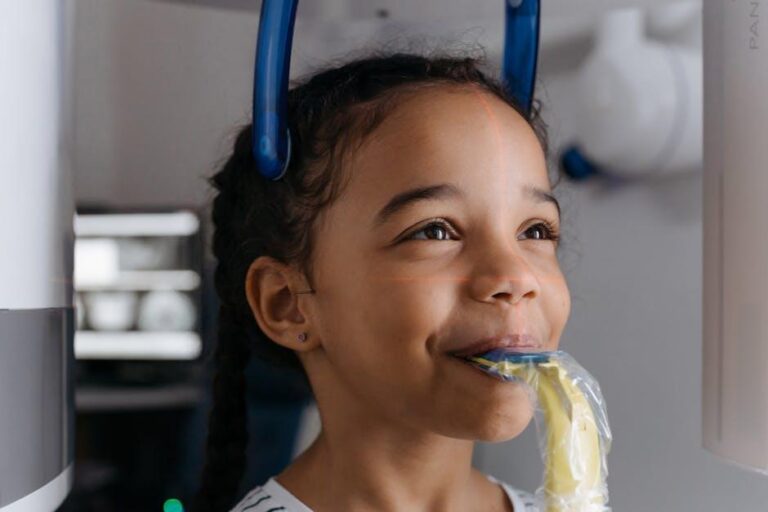1 in 3 Kids Has Dental Problems, Poll Finds – U.S. News & World Report
Recent findings from a nationwide poll indicate a startling trend: 1 in 3 kids in the United States is currently facing dental problems. This report, covered by the respected U.S. News & World Report, shines a light on a critical aspect of children’s health often overlooked amidst other global health discussions. Dental issues in children can affect more than just their smiles—they influence overall well-being, nutrition, and school performance. This comprehensive article dives deep into what these findings mean, the main causes behind pediatric dental problems, and how parents and caregivers can proactively support their children’s oral health to prevent future complications.
What the Poll Revealed: Children’s Dental Health in Focus
The poll surveyed thousands of American families across diverse demographics. The key statistics emerging include:
| Statistic | Details |
|---|---|
| Prevalence | 1 in 3 children currently have dental problems |
| Common Issues | Tooth decay, cavities, gum disease, enamel defects |
| Age Group Most Affected | Children between ages 6-12 years |
| Access to Dental Care | 40% of children with dental problems lacked regular dental visits |
| Socioeconomic Factors | Higher rates among lower-income families |
This poll’s results highlight not only the widespread nature of dental problems among children but also underscore the disparities in healthcare access and education related to oral health.
Common Pediatric Dental Problems Explained
1. Tooth Decay & Cavities
Tooth decay remains the most prevalent dental disease in children worldwide. It is caused primarily by the buildup of plaque, sugary diets, and poor oral hygiene. Untreated cavities can lead to pain, infections, and difficulties in eating or speaking.
2. Gum Disease (Gingivitis)
Even children are prone to gum inflammation if oral hygiene is neglected. Early signs include redness, swelling, and bleeding gums, which—if untreated—can escalate to periodontitis affecting permanent teeth.
3. Enamel Defects
Enamel hypoplasia or fluorosis can weaken children’s teeth, making them more susceptible to damage and decay.
Why Are So Many Kids Facing Dental Problems?
The reasons behind the alarming dental health statistics are multifaceted:
- Poor Oral Hygiene: Many kids do not brush or floss adequately, missing crucial dental care steps.
- Diet: Excessive consumption of sugary snacks, sodas, and processed foods promotes cavity formation.
- Lack of Regular Dental Visits: Some families face barriers such as cost, fear, or absence of local dental services.
- Health Education Deficient: Children and parents may not be fully aware of proper oral health practices and risks.
- Socioeconomic Challenges: Children in lower-income families are disproportionately affected due to limited resources.
Benefits of Early Dental Care and Prevention
Addressing dental problems early can dramatically improve a child’s health outlook. Consistent care offers:
- Reduced pain and discomfort
- Better nutrition and eating habits
- Improved speech and confidence
- Prevention of costly dental treatments in the future
- Positive lifelong oral hygiene habits
Practical Tips for Parents to Improve Children’s Dental Health
- Encourage brushing twice daily with fluoride toothpaste
- Introduce flossing as soon as two teeth touch
- Limit sugary snacks and drinks, opting for water and fresh fruits instead
- Schedule regular dental check-ups at least twice a year
- Set a good example by maintaining your own oral hygiene
- Use fun oral health apps or timers to make brushing engaging
Case Study: Success Story from a Community Dental Program
A community health initiative in Ohio targeted children in low-income neighborhoods, providing education, free dental screenings, and fluoride varnish treatments. After one year:
- Cavity rates decreased by 25%
- Parents reported improved understanding of oral health
- School attendance improved due to fewer dental-related absences
“Our aim was to bridge the gap in access, and seeing healthier smiles in the community shows that prevention and education can work.” – Dr. Maria Gonzalez, Program Director
Firsthand Experience: Parent’s Perspective
Jessica, a mother of two, shares her journey:
“I was shocked to learn my 7-year-old son had multiple cavities during his dental visit. We were busy and didn’t pay much attention to his sugar intake or how well he brushed. After consulting with our dentist and changing his oral care routine, his next visit showed significant improvement. It’s been a wake-up call to prioritize dental health for my whole family.”
Conclusion: Protecting the Smiles of the Future
The poll revealing that 1 in 3 kids in the U.S. has dental problems rings an urgent call to action for parents, caregivers, educators, and healthcare providers. By understanding the causes, actively embracing prevention strategies, and ensuring regular professional dental care, we can dramatically reduce childhood dental diseases and promote healthier, happier futures. A healthy smile is more than just appearance—it’s a foundation for overall well-being.
Stay informed, practice good habits, and let’s work together to turn this concerning statistic into a story of health and hope.


